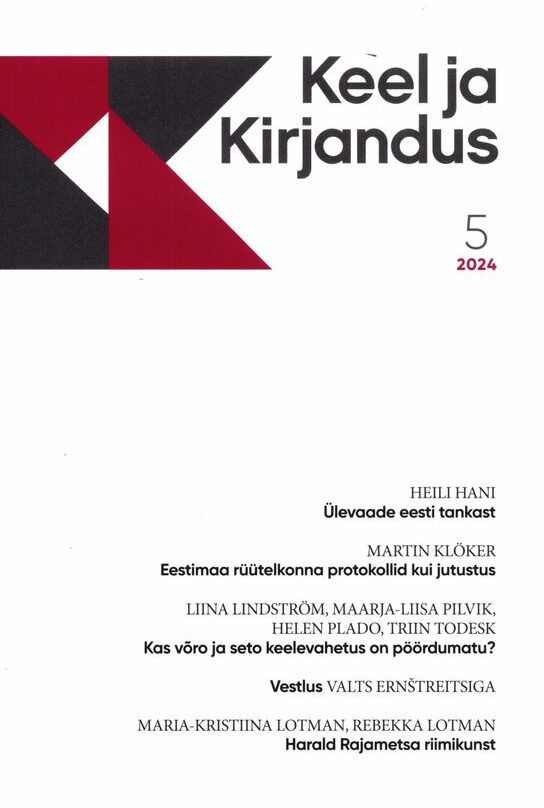Martin Klöker „Faktijutustus XVII sajandil. Eestimaa rüütelkonna protokollide narratoloogiline struktuur“

Klöker, Martin (2024). Faktijutustus XVII sajandil. Eestimaa rüütelkonna protokollide narratoloogiline struktuur. In: Keel ja Kirjandus 5, 432–448.
Faktisches Erzählen im 17. Jahrhundert. Überlegungen zu Narratologie in Protokollen der Estländischen Ritterschaft / Factual Narrative in the 17th Century. On the narrative structure of the minutes of the Estonian corporation of nobility
Abstract
Keywords: narrative, early modern literature, Baltic German culture, Caspar Meyer
To date, there has been hardly any scholarly consideration of minutes (Protokoll) and reports (Bericht) as narrative texts with poetic potential, especially in 17th-century literature. In preparation for an edition of the minutes, this article is dedicated to an initial analysis of the minutes written by Caspar Meyer, secretary of the corporation of Estonian nobility (Estländische Ritterschaft) from 1634 to 1653. The analysis comprises several aspects: a preliminary look at definitions is followed by a discussion of the emergence of minutes as a combination of different text forms (e.g., records of meetings, travel reports, court verdicts, letters) in the presumably immediate draft transcript and the subsequent carefully crafted fair copy. It then outlines the narrative means and structures used to construct the lifeworld of the corporation of Estonian nobility in the protocol as a factual narrative. Particular attention is paid to the author of the protocol and his representation in the narrative. The strict requirements of brevity, neutrality, and reliability in representing reality severely limited the author’s options, but allow an illuminating insight into the means of constructing self-narratives, as the author is also a protagonist in the Baltic lifeworld (baltische Lebenswelt) of his time.